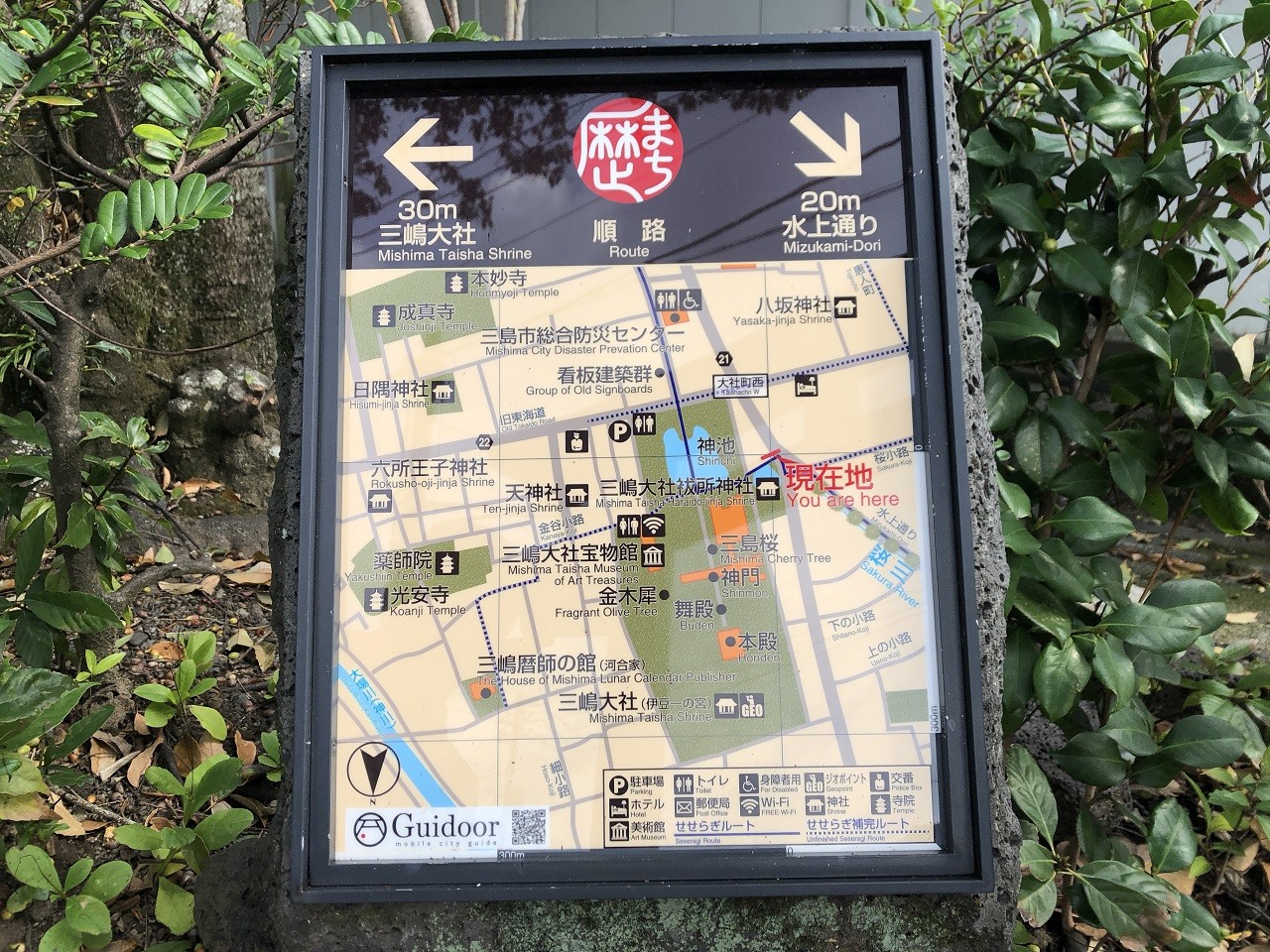(3) Mishima Haraido Shrine

Seseragi Walking route / (D) Mishima Taisha Shrine Area
Recommended Spots Nearby
Mishima Baikamo Pond

In the 1990s, citizens took initiatives to promote environmental improvement activities, and “Mishima Baikano Pond” was built with the aim of restoring and nurturing the Japanese Water-crowfoot (Mishima Baikamo).
Riverside’s Literature Monuments (Mizukami-dori Road)

On the Mizukami-dori Street along the Sakuragawa River from Mishima Station to Mishima Taisha Shrine, there are 12 monuments of literary figures related to Mishima city, including the world-famous writers such as Dazai Osamu and Wakayama Bokusui.
Enmyoji Temple

The Enmyoji temple was founded by Niccho Shonin in 1479 as a temple for the Nichiren sect of Buddhism.
The original mountain gate burned down in a big fire that spread in 1878, and it was replaced with the main gate from the Honjin* of Tokaido Mishima-shuku that was the eleventh of the fifty-three stations of the Tokaido Road during Edo period Japan.
Old Kamakura Road

The “Kamakura Kodo” is a road that was developed to connect Kyoto and Kamakura when "Minamoto no Yoritomo" started Japan’s first Shogunate regime in Kamakura (Kamakura Shogunate), and it became the essential road for east-west traffic.
Goten River

It is said that the Goten River was given its name because this river flows to the east side of a palatial home where Iemitsu, the third Shogun of the Edo period, stayed when on the way to Kyoto.
The ruins of "Toiyaba (Administration office in Edo period)"

Mishima town flourished as the 11th post town on the “Tokaido road” that was the most important of the Five Routes of the Edo period in Japan, connecting Kyoto to Edo (Tokyo).
Back to "Mishima City"


